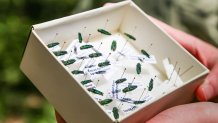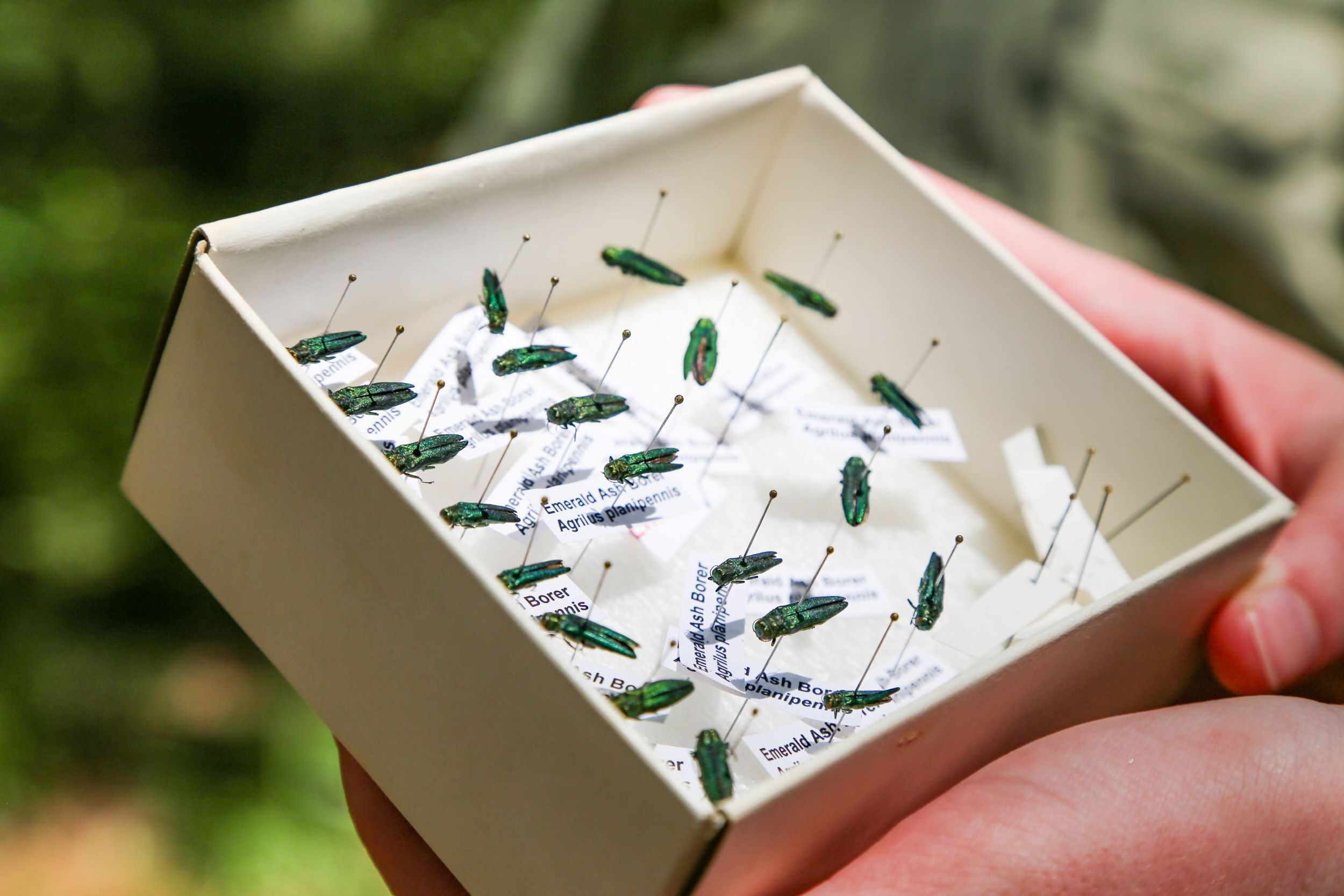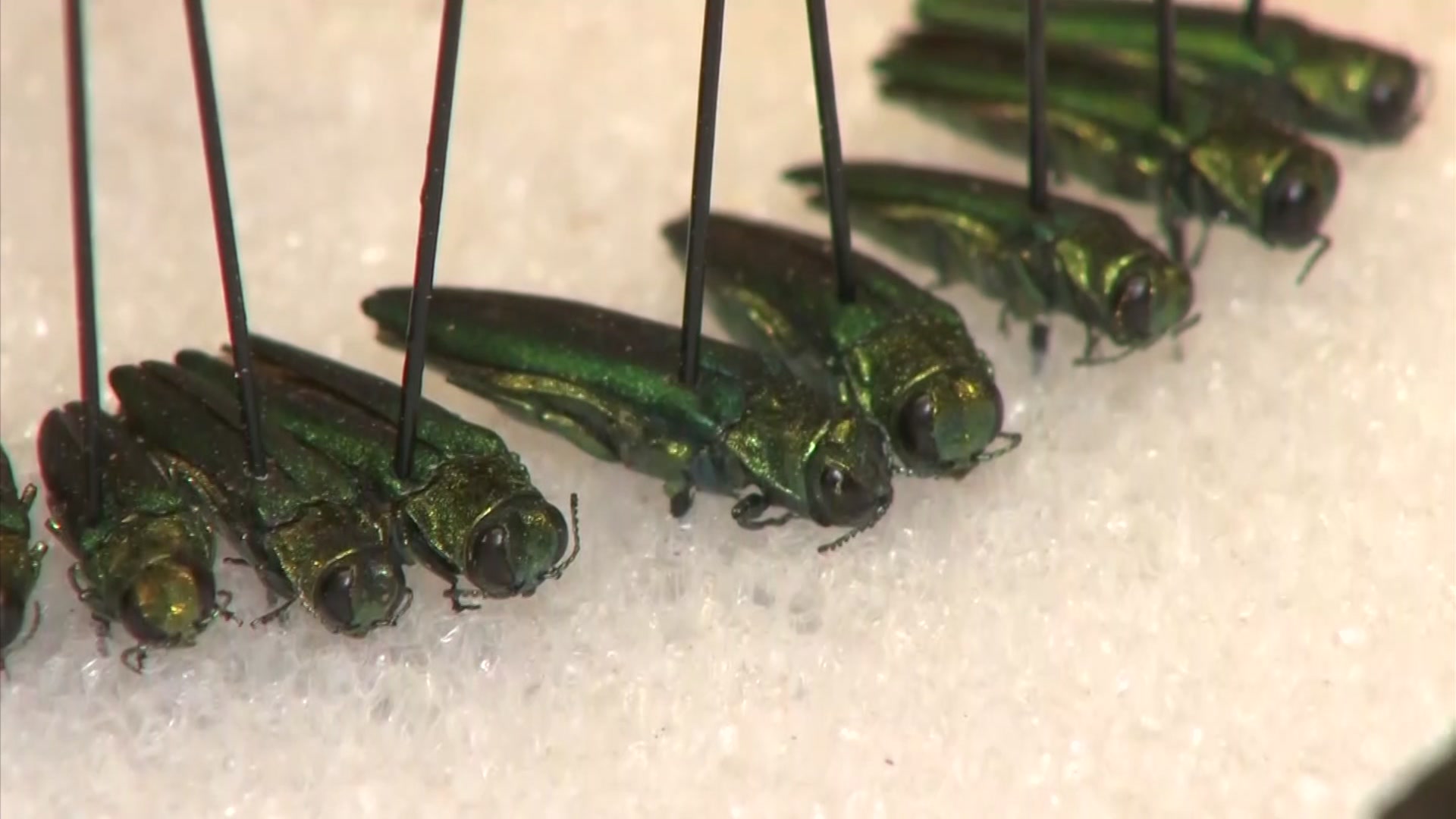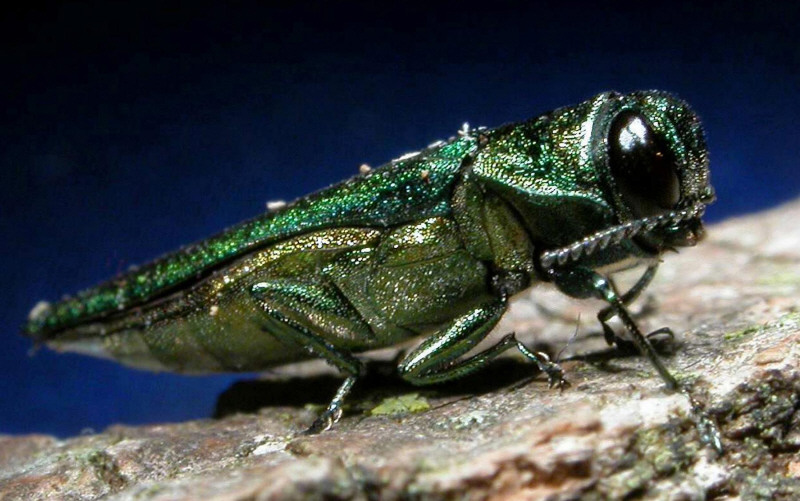The devastating and invasive emerald ash borer beetle is confirmed in five new Texas counties, according to the Texas A&M Forest Service.
The non-native small green beetle has now been confirmed in Grayson, Hill, Hood, McLennan, and Palo Pinto counties. On Monday, the city of Dallas confirmed the beetle had been found at two locations in city limits, including inside the Great Trinity Forest which is estimated to be 40% ash trees.
The insect is devastating to ash tree populations, boring its way into the bark of the tree where it lays eggs. The beetle's larvae eventually feed on the tree's water-conducting tissue, slowly killing the tree.
“The spread of EAB to these counties is alarming,” said Allen Smith, Texas A&M Forest Service Regional Forest Health Coordinator. “It’s more likely for EAB to spread to adjacent counties, but the spread to McLennan County indicates that EAB is being spread by humans, which can be prevented.”
Get top local stories in DFW delivered to you every morning. Sign up for NBC DFW's News Headlines newsletter.
The Texas A&M Forest Service, which has set hundreds of traps around the state and monitors for EAB each year, said the specimens were collected in each of the five counties this month. The samples were sent to the USDA Department of Animal and Plant Health Inspection Service (APHIS) where they all tested positive for EAB.
“Since 2018, we annually deploy nearly 500 traps across Central, East, and North Texas watching for the insect’s presence and movement,” said Smith. “Both healthy and unhealthy ash trees are susceptible to EAB attack and have no natural resistance to the invasive insect. Without proper proactive measures, mortality can be 100% in heavily infested areas - so early detection could improve our chances to manage for the pest.”
Once the beetle is confirmed in a county, the Texas Department of Agriculture establishes a quarantine that restricts the movement of woody ash material from only being moved between infected counties. The forest service said the small beetle can be unintentionally transported on firewood and wood products and the quarantine helps slow the beetle's spread.
All species of ash are susceptible to the destructive EAB. Infested trees die within two to five years after infestation.
The Texas A&M Forest Service said they have resources available to help affected communities identify signs of EAB infestation, as well as make decisions about preventative measures they can take and how to handle tree management and removal.
"The agency will work with communities on state quarantines of the movement of wood into and out of the area. These quarantines are standard protocols with such infestations and in Texas are set by TDA," the forest service said.
To report emerald ash borer, please call the EAB Hotline at 1-866-322-4512.
WHAT IS AN EMERALD ASH BORER?
The emerald ash borer is a small beetle, green in color and smaller than a penny.
The beetle bores its way into the tree's bark and lays eggs. Larvae feed on water-conducting tissue, eventually killing the tree.
Officials said the insect has been confirmed in more than half of the United States and has killed millions of ash trees.
"Both healthy and unhealthy ash trees are susceptible to an EAB attack and may die within two or three years after becoming infested," said Allen Smith, Texas A&M Forest Service regional forest health coordinator, during an interview with NBC 5 in May 2022. "Ash trees have no natural resistance to the exotic insect. Without proper proactive measures, mortality can be 100% in heavily infested areas, so early detection could improve our chances to manage the pest."
Ash trees with low numbers of EAB often have few or no external symptoms of infestations. However, residents can look for signs of EAB among their ash trees, including dead branches near the top of the tree, leafy shoots sprouting from the trunk, bark splits exposing s-shaped larval galleries, extensive woodpecker activities, and D-shaped exit holes.
The beetle was first discovered in North America in 2002 in Michigan. It has since spread to at least 36 states, killing millions of ash trees.
To report emerald ash borer, please call the EAB Hotline at 1-866-322-4512.





